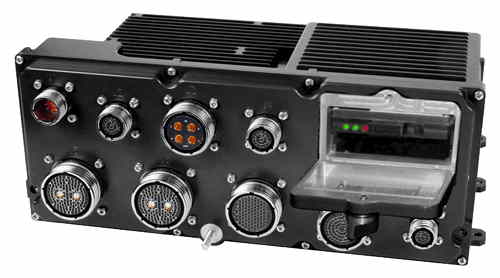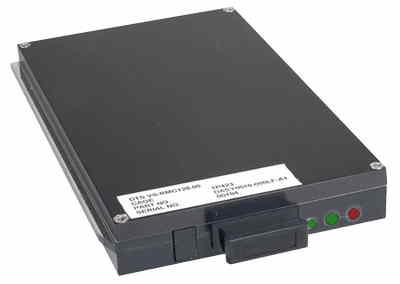Curtiss-Wright Adds NAS Capability to HD Video Management System for Intelligence, Surveillance, and Reconnaissance Platforms
To support network access, reduce cost, component count
This is a Press Release edited by StorageNewsletter.com on July 1, 2016 at 3:03 pmCurtiss-Wright Corporation‘s Defense Solutions division announced that its VRD1 rugged video management system (VMS) has been enhanced with the addition of NAS capability, expanding its utility in demanding aerospace, defense, and law enforcement ISR applications.

Designed to speed and simplify the integration of HD video management on airborne and ground platforms, the VRD1 delivers integrated format conversion, compression, scaling, switching, recording and network distribution of many video types in a single compact rugged unit.
Now also able to function as NAS or as a network file server (NFS), the VRD1 spans both video-centric and network-centric systems. It enables Ethernet-based network clients to remotely access files stored on the VRD1, using standard networking protocols (such as NFS, CIFS, FTP or HTTP).
With its ability to now serve boot files to any network client, this VMS reduces size, weight, power and cost (SWaP-C) by eliminating the need for additional memory storage in each network client.
The VRD1 is for use in demanding deployed applications, such as Intelligence, Surveillance, and Reconnaissance (ISR) missions that require multiple displays and cameras, such as FLIR and Wescam turret-mounted camera systems, and deployed Ethernet-based systems whose network clients require access to NAS.
“The addition of NAS functionality to our popular VRD1 video management system further extends our leadership and commitment to providing the industry’s most innovative and high performance solutions for demanding video-centric and network-centric applications,” said Lynn Bamford, SVP and GM, defense solutions division. “Customers continue to seek more video functionality, yet seek to reduce SWaP. VRD1 meets these needs with a powerful networked VMS that combines multiple functions in a single unit and eliminates the need for individual storage devices across the platform.“
The VRD1 can be combined with a range of company’s networking and video display products to create powerful deployed video management and storage solutions. From rugged touchscreen LCD displays to miniature network switches, the firm offers a range of rugged system components for deployed applications.
About VRD1:
The VRD1 supports up to 18 video inputs in a mix of different types, including HD-SDI, RGB and DVI. These video inputs can then be routed to any of the VRD1’s 12 video outputs for real-time viewing on displays or to the VRD1’s H.264 video compression subsystem prior to recording on internal removable media or distribution to network client via GbE.
COTS solid state memory advantage
Unlike competing systems that use proprietary memory devices, the VRD1 uses commercial off-the-shelf 2.5″ SATA SSD with storage capacities ranging from 128GB to 2TB, enabling memory to be scaled to meet present and future growth application needs. With SSD memory capacity doubling every 18 months or so, the system can easily and cost-effectively grow in response to the increased demands for storage in deployed systems.
The SSDs, housed in company’s Removable Memory Cartridge (RMC), provide a 100,000 insertion cycle connector, superior to the 50 insertions typically supported by standard SATA connectors. Weighing 0.7 lb (317 g), each RMC is small enough to fit in a shirt or flight-suit pocket and yet rugged enough for transport. Error correction, wear-leveling, and bad block management are performed to ensure integrity for video files













 Subscribe to our free daily newsletter
Subscribe to our free daily newsletter
